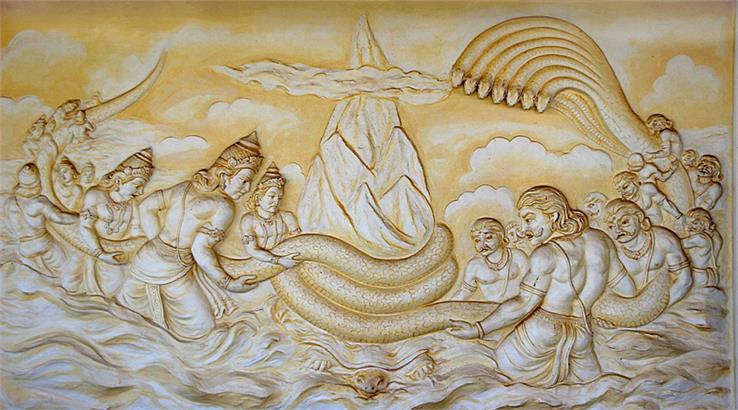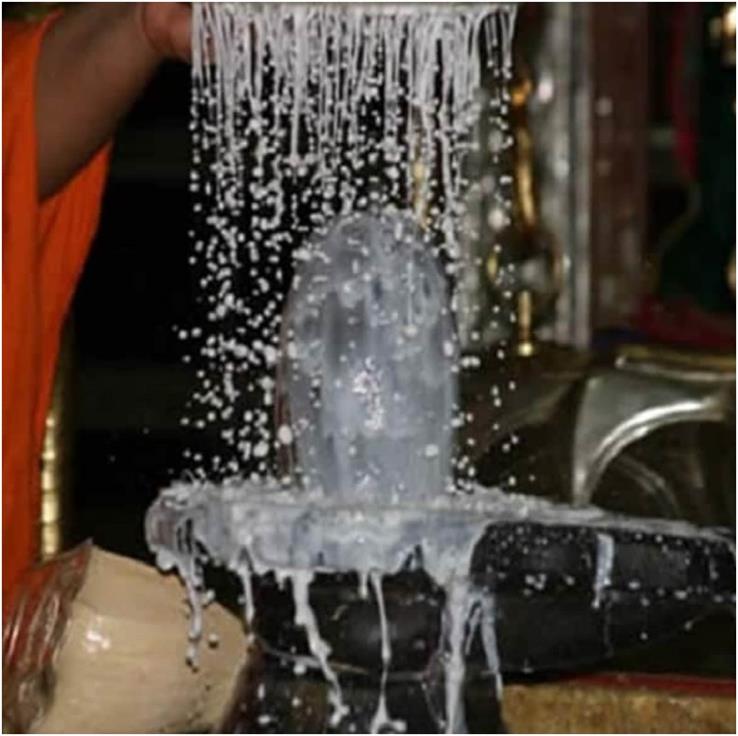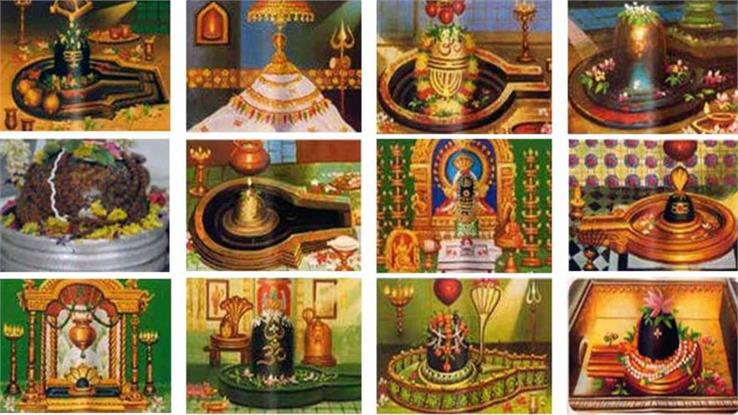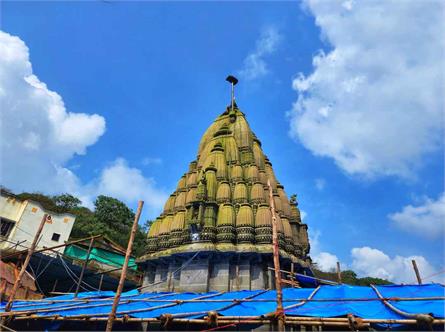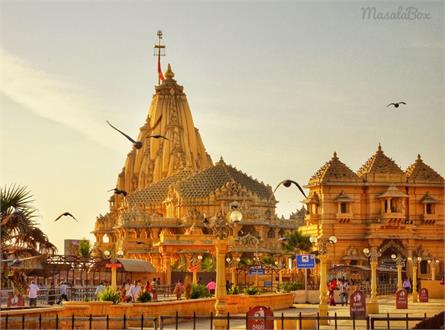In 2023, Experience The Power of Lord Shiva's Mysteries At The 12 Jyotirlinga!
The term "Jyotirlinga" is a combination of two words: "Jyoti" and "linga." In Hinduism, "Jyoti" means "radiant" or "light," while "linga" refers to the symbolic representation of Lord Shiva, representing his divine and cosmic energy. Therefore, "Jyotirlinga" can be translated as the "radiant linga" or the "linga of light."
The Jyotirlingas are the embodiments of this eternal energy, an ethereal light that beckons devotees from every corner of the world, drawing them closer to the divine. Each Jyotirlinga stands as a sacred testimony to the magnificence and omnipotence of Shiva god. They are not mere physical structures but gateways to a realm beyond human comprehension. As you enter these hallowed abodes, you can sense the transformative power that permeates the air. The vibrations of devotion and reverence are palpable, stirring the very depths of your soul.
Also Read: Significance of Visiting Dwadash Jyotirlingas

Every chant of Lord Shiva's 12 jyotirlinga name radiates otherworldly energy, infusing devotees with strength, courage, and unwavering faith. They are the lighthouses amidst the turbulent seas of life, leading lost souls towards the shores of salvation. So, let the magnetic force of the Jyotirlingas draw you closer, igniting a flame of passion and awakening your soul to the boundless possibilities that await. Surrender yourself to the transformative power that flows through these sacred shrines, for in that surrender lies the key to unlocking your true potential and experiencing the divine essence within.
Also Read: Why is Maha Shivaratri celebrated?
Unveiling the Divine Trail | Embark on a Journey to Discover the Magnificent 12 Jyotirlingas and Awaken Your Spiritual Soul | The reason behind offering water on Shivling!
Story Behind Formation of 12 Jyotirlingas | Lord Shiva Story
The story behind the formation of 12 jyotirlingas is related to a legend from the Shiva Purana, one of the sacred scriptures of Hinduism. According to legend, this divine occurrence occurred during a spirited debate between Brahma and Vishnu, two revered Hindu deities revered for their roles in creation and preservation.
To prove his supremacy, Shiva pierced the three mystical states of the Earth – the sky, the world, and the underworld – with a pillar of light. Brahma assumed the form of a swan and soared upwards to locate the pinnacle of the post, while Vishnu took the form of a boar and dug downwards into the ground to discover the bottom. However, neither of them could see the end of the pillar. Brahma, in an attempt to save face, falsely claimed to have found the top of the pillar.
In contrast, Vishnu humbly acknowledged that he could not locate the post's base. Brahma's dishonesty angered Shiva, who cursed the creator deity never to be worshipped. On the other hand, Vishnu was praised for his honesty and would be worshipped forever. The jyotirlinga shrines are temples where Shiva appeared as a fiery column of light.
The 12 jyotirlingas are sacred to Lord Shiva's devotees, who believe that the god has manifested in these places and will grant any wish made at the temples. The 12 jyotirlingas are Swayambhu Lingas, meaning they appeared independently and were not carved by humans.
Another Story
The story behind the formation of the jyotirlinga in India revolves around a mythological event known as the "Samudra Manthan" or "Churning of the Ocean." According to Hindu mythology, the Devas (celestial beings) and Asuras (demons) joined forces to churn the cosmic ocean to obtain the elixir of immortality, known as Amrit. Several celestial and divine entities emerged from the sea during this epic event, including the twelve Jyotirlingas.
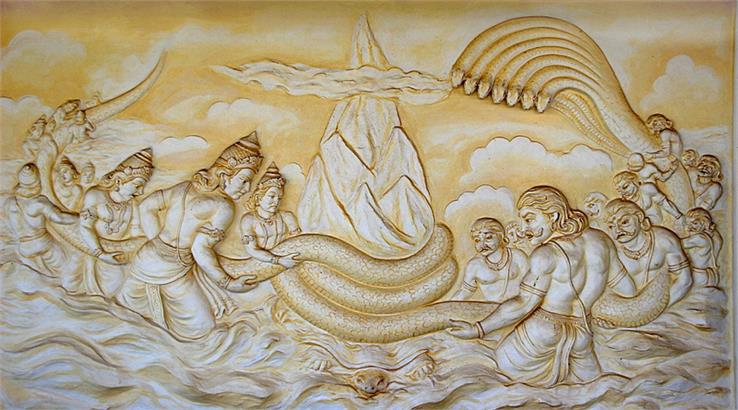
As the churning progressed, a poison called Halahala emerged from the ocean's depths, posing a significant threat to all existence. Lord Shiva consumed the poison to protect the universe. However, the poison turned his throat blue, earning him the name "Neelkanth" (the one with a blue throat).
Various divine objects and beings appeared in the process, including the twelve Jyotirlingas or dwadasha Jyotirlingas. These sacred sites embodied Lord Shiva's holy presence on Earth. They have been installed at specific locations where his energy radiated intensely, and devotees could worship him and seek blessings.
List of 12 Jyotirlinga Name And Place
|
Sr.No |
Jyotirlinga |
Location |
|
01. |
Somnath Jyotirlinga |
Gujarat |
|
02. |
Mallikarjuna Jyotirlinga |
Srisailam, Andhra Pradesh |
|
03. |
Mahakaleshwar Jyotirlinga |
Madhya Pradesh |
|
04. |
Omkareshwar Jyotirlinga |
Omkareshwar, Madhya Pradesh |
|
05. |
Kedarnath Jyotirlinga |
Kedarnath, Uttarakhand |
|
06. |
Bhimashankar Jyotirlinga |
Bhimashankar, Maharashtra |
|
07. |
Kashi Vishwanath Jyotirlinga |
Varanasi, Uttar Pradesh |
|
08. |
Trimbakeshwar Jyotirlinga |
Trimbak, Maharashtra |
|
09. |
Vaidyanath Jyotirlinga |
Deoghar, Jharkhand |
|
10. |
Nageshwar Jyotirlinga |
Dwarka, Gujarat |
|
11. |
Rameshwaram Jyotirlinga |
Rameshwaram, Tamil Nadu |
|
12. |
Grishneshwar Jyotirlinga |
Ellora, Maharashtra |
Each Jyotirlinga holds its own significance, associated myths, and historical events. Devotees undertake pilgrimages to these sacred sites, perform rituals, and offer prayers to seek the blessings of Lord Shiva. The Jyotirlingas serve as powerful spiritual centres where devotees can experience the divine presence and deepen their connection with the Supreme Being. The 12 Jyotirlinga yatra is considered highly auspicious and is believed to bestow spiritual enlightenment, fulfillment of desires, and liberation from the cycle of birth and death.
Detailed Information about 12 Jyotirlingas
Here is detailed information about the twelve Jyotirlingas or dwadasha Jyotirlingas in sequence, including name of 12 jyotirlinga, their history, myths, and formation, as well as details about the rituals and worship associated with them:
1. Somnath Jyotirlinga: The Eternal Moonlit Abode of Lord Shiva
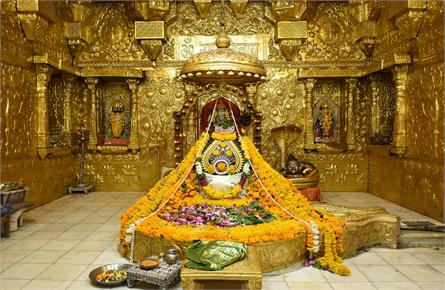
Location: Veraval, Gujarat, India.
History: The Somnath Jyotirlinga in Gujarat, India, is an ancient and revered temple with immense significance for people of various spiritual beliefs. This holy site has a rich and intriguing history, having been destroyed and rebuilt multiple times.
Myth: According to legend, the Moon God/Chandra initially constructed the temple. The temple's importance is evident in the reverence it receives from devotees who visit it, seeking solace, peace, and spiritual upliftment.
Also Read: The detailed story of Moon curse and formation of Somnath Jyotirlinga
Rituals and Worship: Devotees offer prayers, perform aarti, and offer flowers, coconut, and Bilva leaves to Lord Shiva. The Shivratri festival is celebrated here with great enthusiasm.
2. Mallikarjuna Jyotirlinga: The Sacred Confluence of Divinity and Devotion
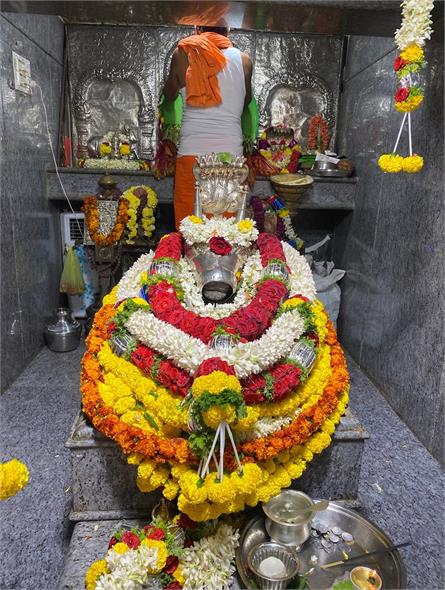
Location: Srisailam, Andhra Pradesh, India.
History: The temple of Mallikarjuna is on the Shriparvata (Sri Sailam) hills, where Lord Shiva is said to have resided with his consort Parvati. The temple has a rich history and has been patronized by various dynasties.
Myth: It is believed that after the self-immolation of Goddess Sati, her body parts fell at different locations, and the upper lip of the goddess is said to have fallen here. Hence, it is considered a sacred site.
Rituals and Worship: Devotees offer prayers, perform Abhishekam (ritual bathing) of the lingam, and offer garlands and Bil leaves to Lord Shiva. The annual Brahmotsavam festival is a major celebration here.
Also Read: Learn More Interesting And Factful Things About Mallikarjuna Jyotirlinga
3. Mahakaleshwar Jyotirlinga: Where Timeless Divinity Meets Mortal Realm

Location: Ujjain, Madhya Pradesh India.
History: The temple of Mahakaleshwar is located on the banks of the Shipra River and is one of the most important Jyotirlingas. The temple has a long history and is associated with various dynasties.
Myth: According to legends, a fierce battle between Lord Shiva and the demon Dushan took place at this spot. Lord Shiva emerged victorious and established himself as Mahakaleshwar.
Also Read: Discover The Complete Story of Formation of Mahakaleshwar Temple
Rituals and Worship: The temple follows elaborate rituals, including five types of aartis throughout the day. The Bhasma Aarti, performed before dawn, is a major attraction. The month of Shravan and Mahashivaratri is celebrated with great enthusiasm.
4. Omkareshwar Jyotirlinga: Embracing the Sacred Omnipresence of Shiva

Location: Omkareshwar, Madhya Pradesh, India.
History: The Omkareshwar temple is on an island called Mandhata in the Narmada River. The temple's architecture is an excellent example of ancient Indian craftsmanship.
Also Read: On visiting and worshiping Omkaleshwar Temple, all the sins of a person go away
Myth: The sacred island of Mandhata is said to resemble the shape of the Hindu symbol "Om," giving the name Omkareshwar. It is believed that Lord Shiva resided here in the form of Omkareshwar.
Rituals and Worship: Devotees perform aarti, offer prayers, and take a holy dip in the Narmada River. The Narmada Jayanti and Mahashivaratri are celebrated with enthusiasm.
5. Kedarnath Jyotirlinga: The Majestic Gateway to 4 Dham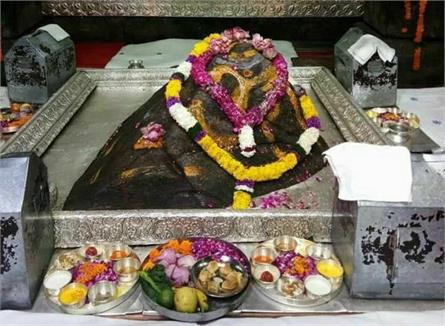 Source: kedarnath
Source: kedarnath
Location: Kedarnath, Uttarakhand, India.
History: Kedarnath is one of the most revered Jyotirlingas in the scenic Himalayan ranges. The temple has a long history and is associated with various mythological events. Kedarnath is also considered 4 Dham (Badrinath, Kedarnath, Yamunotri, Gangotri).
Myth: After the great Kurukshetra war in the Mahabharata, the Pandavas sought Lord Shiva's forgiveness for the sins committed during the battle. It is said that Lord Shiva took refuge in this place in the form of a bull, according to mythology. The story goes that the Pandavas were seeking penance for their actions, and Lord Shiva appeared to them as a bull. It is a fascinating tale passed down through generations and still a popular story today.
Also Read: Mystery of Formation of Jyotirlinga in Kedarnath Temple
Rituals and Worship: The Kedarnath Yatra is a significant pilgrimage for Hindus. Every year, pilgrims trek through a challenging route to reach the temple and offer prayers to Lord Shiva. It is said that the temple is only accessible for a few months due to the harsh weather conditions. Despite the challenges, devotees journey to seek Lord Shiva's blessings and pay their respects to the deity. It is a spiritual experience highly revered by Hindus, and the story of the Pandavas seeking Lord Shiva's forgiveness after the Kurukshetra war is an integral part of the temple's history.
6. Bhimashankar Jyotirlinga: Where Nature's Serenity Merges with Divine Grace

Location: Bhimashankar, Maharashtra, India.
History: The temple of Bhimashankar is a jyotirlinga in Maharashtra surrounded by lush green forests. It is said to have been constructed in the 13th century.
Myth: The legend behind Bhimashankar Jyotirlinga is associated with the defeat of the demon Tripurasura by Lord Shiva.
Also Read: Full Details of The Legend of Bhimashankar Jyotirlinga And Lord Shiva's Victory Over The Demons
Rituals and Worship: Devotees offer prayers, perform abhishekas, and participate in the daily aarti. The Maha Shivaratri festival witnesses a large number of devotees.
7. Kashi Vishwanath Jyotirlinga: The Holy Center of Cosmic Enlightenment
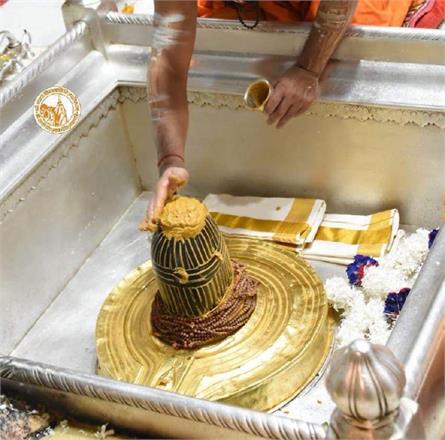
Location: Varanasi, Uttar Pradesh, India.
History: The Kashi Vishwanath temple is one of India's oldest and most famous Shiva temples. It has been destroyed and reconstructed several times over the centuries.
Myth: The city of Varanasi is considered the holiest city in Hinduism, and it is believed that Lord Shiva Himself resides here as the ruler and protector of the city. The Jyotirlinga represents His manifestation as Vishwanath, the Lord of the Universe.
Also Read: The Complete Story of Kashi Vishwanath Temple
Rituals and Worship: Devotees offer prayers, perform abhishekas, and witness the daily Ganga aarti. The temple is thronged by pilgrims, especially during festivals like Mahashivaratri and Kartik Purnima.
8. Trimbakeshwar Jyotirlinga: Where Divinity Flows with Sacred Triveni Sangam

Location: Trimbak, Maharashtra, India.
History: The Trimbakeshwar temple is in the Nashik district of Maharashtra. It is situated near the source of the Godavari River and holds immense religious significance.
Myth: The temple is associated with various mythological stories, including the curse of Gautam Rishi. According to the legends, Lord Shiva resided here in the form of Trimbakeshwar, bestowing blessings and salvation to devotees.
Also Read: Interesting and Complete Story of Sage Gautam at Trimbakeshwar Temple
Rituals and Worship: Devotees perform Abhishekam, offer prayers, and participate in rituals like Rudrabhishekam. The Kumbh Mela, held in Nashik, witnesses a massive gathering of devotees.
9. Baidyanath Jyotirlinga: Healing Souls with Divine Blessings and Grace
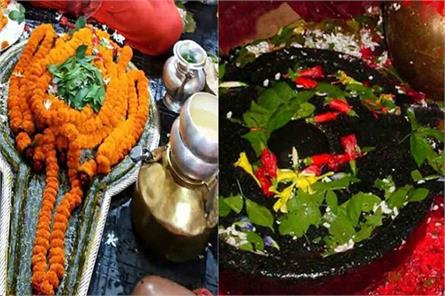
Location: Deoghar, Jharkhand, India.
History: The Baidyanath temple is in Deoghar in the Santhal Parganas region of Jharkhand. It has been a prominent centre of worship for centuries.
Myth: The temple is associated with the myth of Ravana, who performed rigorous penance to seek the blessings of Lord Shiva. Lord Shiva appeared as Vaidyanath and granted him immortality.
Also Read: The complete story of Ravana related with Baidyanath temple
Rituals and Worship: Devotees offer prayers, perform abhisheka, and participate in the Kanwariya Yatra during Shravan. The Shravani Mela attracts millions of devotees each year.
10. Nageshwar Jyotirlinga: Reveling in the Serene Depths of Shiva's Presence

Location: Dwarka, Gujarat, India.
History: The Nageshwar temple is near Dwarka, one of the significant pilgrimage sites for Hindus. It holds immense religious significance and is associated with Lord Krishna.
Myth: The Jyotirlinga is believed to represent the victory of Lord Shiva over a demon named Daruka. The demon was causing trouble for the people, and Lord Shiva emerged from the earth to slay him.
Also Read : The victory of Lord Shiva over a demon Daruka and formation of Nageshwar Jyotirlinga
Rituals and Worship: Devotees offer prayers, perform Abhishekam, and recite the Nageshwar Stotram. The temple celebrates festivals like Mahashivaratri and Shravan Mahotsav.
11. Rameshwaram Jyotirlinga: A Sacred Pilgrimage to Divine Redemption

Location: Rameshwaram, Tamil Nadu, India.
History: The Ramanathaswamy temple is in Rameshwaram(one of 4 dham), a sacred town on the eastern coast of Tamil Nadu. It is renowned for its architectural brilliance and spiritual significance.
Myth: According to the epic Ramayana, Lord Rama and his army built a bridge from Rameshwaram to Lanka to rescue his wife, Sita. Lord Rama worshipped Lord Shiva here to seek forgiveness for killing Ravana, a devotee of Lord Shiva.
Also Read: The Interesting and Detailed Story of Rameshwaram Jyotirlinga
Rituals and Worship: Devotees bathe in the sacred waters of Agni Theertham and perform Abhishekam to Lord Shiva. The temple also offers special Sevas and festivals throughout the year.
12. Grishneshwar Jyotirlinga: Experiencing the Celestial Grace of Lord Shiva
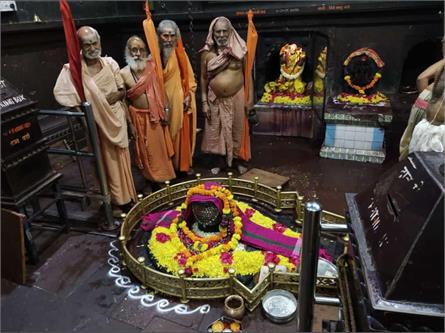
Location: Ellora, Maharashtra, India.
History: The Grishneshwar temple is near the Ellora Caves, a UNESCO World Heritage Site. The temple has ancient origins and is known for its exquisite architecture.
Myth: The temple is associated with the myth of a devout woman named Kusuma, who unknowingly disturbed the penance of a sage. She built the temple to seek redemption and worshipped Lord Shiva, who appeared as Grishneshwar.
Also Read: The miracle of Lord Shiva’s compassion at the Grishneshwar Jyotirlinga
Rituals and Worship: Devotees offer prayers, perform abhisheka, and participate in traditions like Rudrabhishekam. The temple witnesses a significant influx of devotees during Mahashivaratri and other festive occasions.
Gallery

